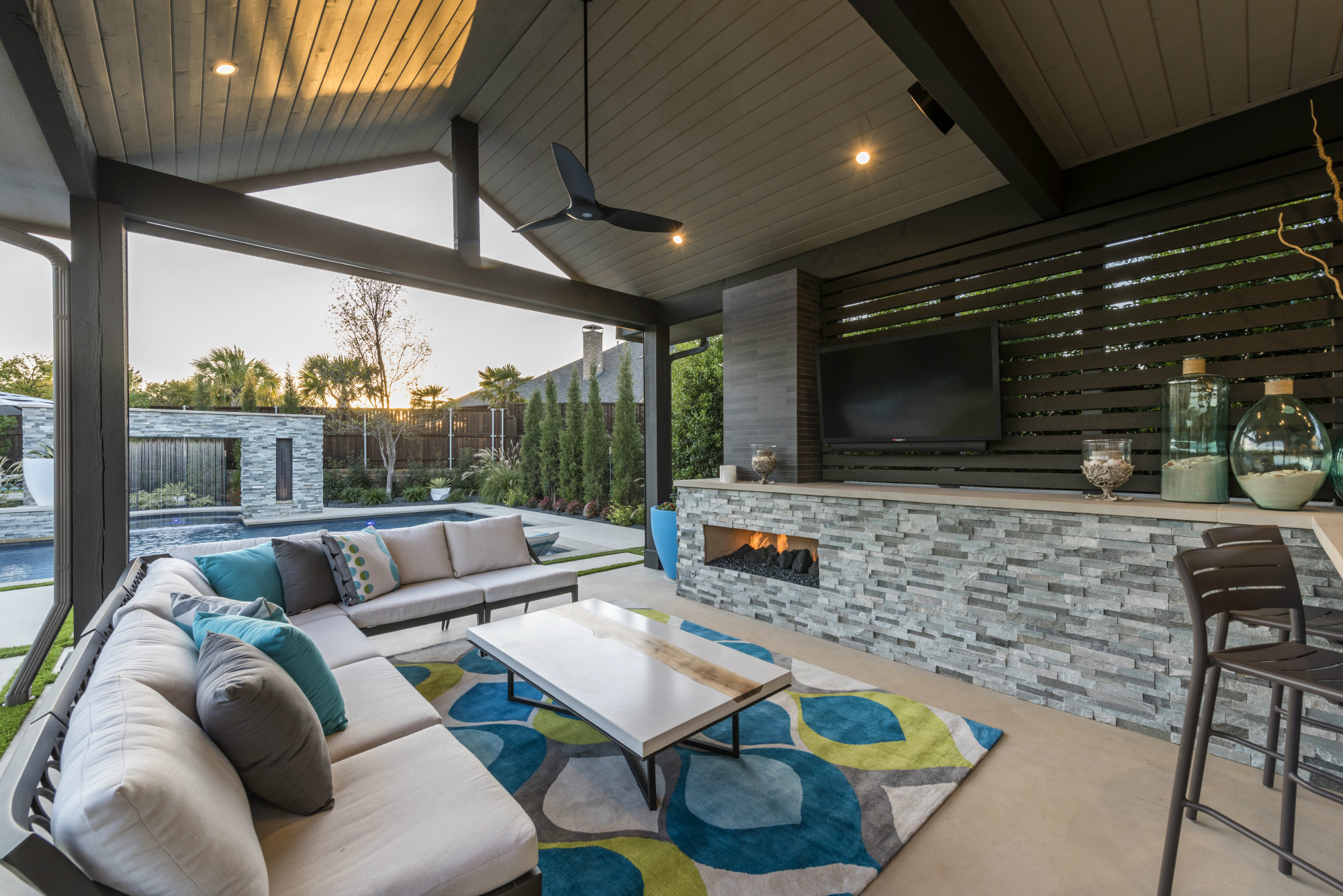Taking on a new product line always invites stress. Especially with a category such as backyard-living products, which includes so many options.
But like many retailers and builders, DesRochers Backyard Pools and Spas of Wilmington, Ill. couldn’t pass up the opportunity to bring in a new revenue stream — one whose generous profit margins could help offset some of the more commoditized products in a company’s mix. And why leave that money on the table for another industry to pick up?
But at the time the company had precious few square feet to devote to this space-eater of a category. So Retail Operations Manager Mallory Wachowski did her research, strategically chose a few pieces to put on the floor, and crossed her fingers.
She made a sale the first week. “Within a couple days someone came in to buy a hot tub and decided to buy the patio furniture that sat next it on the floor,” Wachowski says. “I couldn’t believe it! It was the greatest day ever. Our team went out and had dinner to celebrate.
“It was beginner’s luck for sure.”
No doubt this victory gave the team the boost of confidence it needed to proceed with the new product line. But, as with just about any category, gaining momentum will take time.
Here, dealers discuss two primary challenges in launching a backyard-products division, and how to tackle them.
Challenge: You need to become an expert novice.
It’s true that any product a company sells will entail in-depth product knowledge, but backyard-living products can require an even more of a steel-trap memory.
“With hot tubs, it’s like, ‘Here are your color palettes,’” says Chase Decker, sales manager of Backyard Pool & Patio Inc. in Bloomington, Ill. “But with patio furniture, are you doing sling, cushion, woven or wicker?’ There are a lot more options to go through.”
And if a company starts by flooring just a few pieces, staffers almost need to know more than those who can showroom dozens of sets. Those pieces on the floor can only paint part of the picture. Showroom staff will need to fill in the rest by knowing how to navigate through a catalog, website, swatches and other visual aids.
And for those items that must be custom-ordered, staffers must know how long it will take each to arrive, since manufacturers can offer some models faster than others.
Solution 1: Stick with one line to start.
Even some companies that dedicate thousands of square feet to backyard-living products choose to work with one manufacturer per product category — one for furniture, one for grills, etc.
In the furniture sector, that’s become easier as consolidation has taken place among manufacturers, who acquire others with different specialties. So producers that offer aluminum, wicker and teak may be easier to find than before.
Companies that start with one manufacturer have less in the way of delivery, warranty and other logistical information to remember, making it easier for staff to acclimate.
Such streamlining can even help customers. “When you have too many products and lines, a customer almost psyches themselves out on what they should get,” says A.J. Cada, store manager of Cada Pools and Spas in St. Charles, Ill. “They can get so flustered, and sometimes they just end up not even making a purchase at all because they don’t know what to purchase.”
But others don’t like to limit themselves, preferring to offer more variety.
Solution 2: Assign one or two specialists.
Again, even some larger backyard-living sellers use this strategy, especially in colder states where sales are more seasonal.
“It’s almost too much for everybody to learn,” says Ginnie Vaughan, general manager of National Pools of Roanoke, in Roanoke, Va.
Her company works out of a converted car dealership — plenty of space. Still, they prefer to approach the backyard-living section as a specialty. They always have two or three salespeople on the floor at a time who can discuss these products. “That way, if two of us are with someone who’s really focused on talking about options and taking a lot of time, then there’s still someone available just to help that person who just wants to look around.”
Other firms want their entire staff comfortable with selling items such as furniture, grills and kitchens. Backyard Pool & Patio strives to achieve this, even with its seasonal staff. To accomplish this, Decker says, the company goes through at least one in-depth training before each season, and it has a detailed procedure manual in place to help novices find all the information they need.
Challenge: Can’t show much on the floor
Many companies venturing into the backyard-living market start small, not only from lack of space, but also to minimize risk: If the products don’t appeal to the clientele, not much is lost. On the flip side, it’s harder to sell if consumers can’t engage with it firsthand.
Solution 1: Choose strategically.
If only a few items can be displayed, they must serve many purposes. So choose wisely.
The goal isn’t necessarily to showroom pieces that will sell right away, Wachowski says. If you can only display a few items, choosing the one thing that meets a client’s every need is like threading a needle. And it may take a while to suss out local tastes. Manufacturers can often advise dealers on national trends, but not always regional, let alone local.
For most, those floor models will serve to generate interest and confidence, so clients are comfortable placing a custom order, Wachowski says.
Look for pieces that demonstrate the quality your manufacturer offers. Wachowski doesn’t look for the highest-ticket items, in case clients are discouraged by the price tag. Instead, she seeks value — an intersection of beauty, quality and a digestible price. Make sure the pieces look good together and feature colors and patterns that will have wide appeal — nothing too wild, lest they turn people away.
And make sure they’re sturdy and comfortable — consumers will want to try them out feel reassured that the line can endure the elements.
Solution 2: Learn to sell from a catalog. It’s an art.
It may seem a simple task — leafing through a catalog or browsing through a website with the customer to find something they like.
But it’s actually a bona fide skill, Wachowski contends. Not only does the salesperson need to know the basic facts, features and policies — they must maintain the customer’s confidence. After all, the client will potentially spend thousands of dollars on something they haven’t seen firsthand. You also have to steer them toward something realistic. If the manufacturer expects you to purchase a particular line by the truckload for delivery, then you might not be able to provide it to an individual. If the client has a deadline, certain products may not make it. This requires detailed-product knowledge and some finesse.
“The customer has to feel like they’ve shopped without shopping,” Wachowski says. “The [sales associate] has to be able to know how to talk through a catalog pretty seamlessly … If they hesitate, the customer gets a little uneasy.”
Solution 3: Keep realistic expectations.
It could take three years or more for a company to find its groove with these products, these professionals say. Because of this, Wachowski finds it helpful to set aggressive but realistic goals:
“Of course you’ll want to make sales and turn your inventory, but sometimes you have to take your missteps in stride and know that you did the best you could.”



